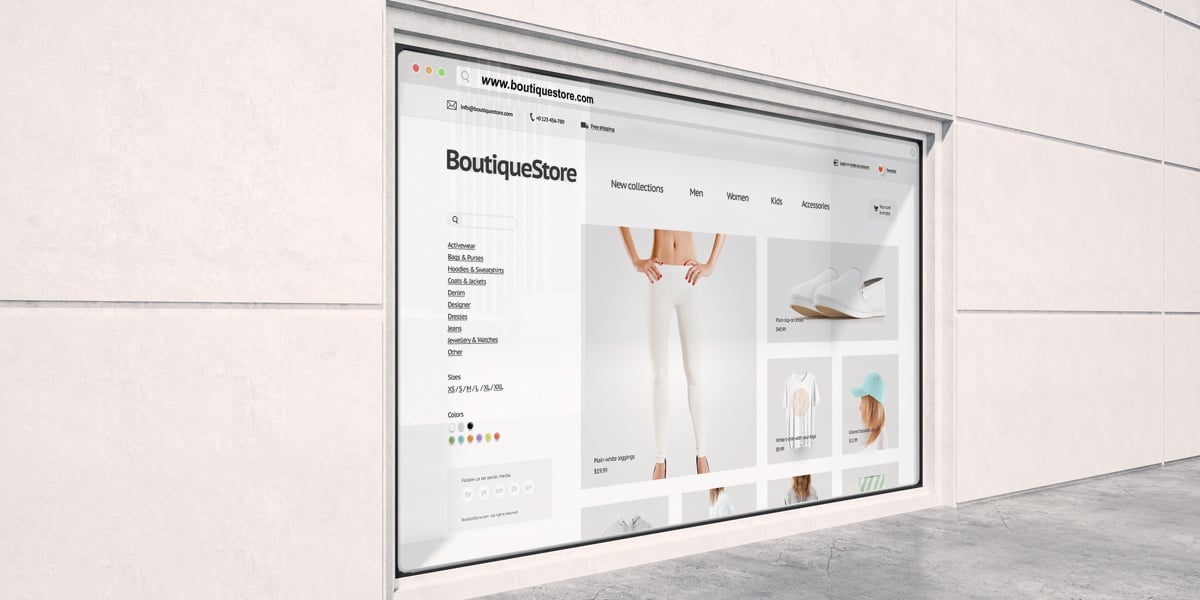
The Future’s Digital: Reimagining Retail Through Digital Transformation
Adopting digital technologies is not a new concept for the retail sector. E-commerce is, of course, one of the first digital-native industries. However, even store-based retail is switching it up to deliver a more digital-led approach. McKinsey’s research shows Coronavirus supercharged digital transformation and pushed many businesses over the technology tipping point. Companies have transformed forever, and the retail sector is no different.
The Bannerflow State of In-Housing Report 2022 looks closely at digital transformation and how its impacting in-housing within many sectors. For example, 56% of retail and e-commerce sector respondents report full digital competency, managing all their marketing in-house. Furthermore, our report draws many exciting conclusions about the future of in-housing and digital transformation in this sector.
Retail goes Digital
Coronavirus saw many successful store-based businesses turn to the digital world to drum up trade. For some, their first foray into e-commerce meant a seismic shift in some retail operations. Our report found 41% of businesses in retail are increasing their e-commerce strategy. Therefore, as more businesses in this sector have a profile online, it is vital to fine-tune these strategies to keep an engaged and interested audience.
With a commitment to a digital future, more businesses invest in the tools needed to succeed online. From highly sophisticated online and virtual showrooms that replicate walking around the store in-person to predictive analytics guiding customer purchases, the retail world can utilise a wide range of techniques to enhance customer experience.
In this article, we’ll look more closely at how retail businesses are approaching digital transformation and the following five techniques they’re focusing on:
- Maximising data insights
- Unified commerce
- Artificial intelligence
- Shoppable social media
- Influencer marketing
1. Maximising Data Insights
Retail organisations gain significant data from every customer and even those who visit their website without buying. This data is like gold dust and is a vital element of your overall e-commerce strategy when used properly. Our report found 42% of retail businesses are using data in a better way. Next, we’re going to look at what might constitute better.
Customer-driven data insights can help you understand your product range, your most popular items, and even the direction to go with future collections or designs. A combination of data collection software, advanced analytics, mathematical models, and predictive analytics work together to deliver more detailed and accurate insights into your target market. This, in turn, allows retailers to deliver content and products in line with their customer’s expectations. With proper data analysis, retailers can minimise the time and money wasted on campaigns and products that are likely to fail and focus their efforts more closely on the most popular and in-demand areas.
2. Unified Commerce
Shoppers are no longer limiting themselves to a single channel for their purchasing. Instead, they will visit multiple retailer touchpoints when browsing and buying, including their website, mobile app, social media, and sometimes, in-person store visits. This omnichannel approach to shopping requires the same response from retailers. Above all, wherever the customer is, you need to be there too.
Therefore, retail brands are opting for unified commerce strategies utilising fully integrated software platforms that allow for easy management of their different channels and systems in a single place. One report from Kibo found companies with unified commerce were 600% more likely to see higher revenue than their peers during the pandemic. Unified commerce solutions also tie in well with our first point about data. They ensure all data is collated in a single space, making it easier to access and analyse. Essentially, unified commerce takes the confusion that often comes with Omni or multichannel e-commerce and centralises it.
3. Artificial Intelligence
As customers expect to find retailers on any platform they frequently visit, they also expect them to be available and easy to contact. In addition, the modern consumer expects instant access to help and support from any business they communicate with. AI can help in this respect.
For instance, AI-driven chatbots are commonplace across e-commerce websites. They act as a digital store assistant and can also reply to many basic queries that customers commonly ask. The most sophisticated chatbots can tap into your recent orders and even help with returns, refunds, and complaints. The rapid response offered by AI-powered chatbots makes them a popular addition to many retail websites. They can be programmed and customised to embody the brand’s messaging, tone of voice, and identity. While they are no replacement for human customer advisors, they provide value and speed up support for customers, leading to higher satisfaction levels.
4. Shoppable Social Media
Our State of In-Housing Report found that 39% of respondents in the retail sector are expanding their shoppable social media tactics. Retail is the perfect partner for shoppable social media, and it is already hugely effective and profitable for many brands. Social commercial sales are booming, with one American report finding the volume will reach over $100m just in the US by 2023.
Shoppable social media simply transforms great social content into a buying opportunity. It shortens the sales funnel and makes it easier and more convenient for shoppers to buy what they want as they browse their favourite social channels. Modern consumers like to know the story behind the brands they’re buying from, and social content is a perfect way of introducing and marketing products through stories.
5. Influencer Marketing
The retail world is the obvious place for influencer marketing to be a success. Our report shows that 27% of retail organisations are increasing their online influencer engagements. Furthermore, this form of marketing is far outreaching initial expectations, with TikTok surpassing Google as the most used platform on the planet.
Influencer marketing relies upon advocacy from people with great reach online. Wearisma’s research found that in 28% of cases, even when people are unfamiliar with an influencer, their content positively impacts purchase intent. Maximising the potential of influencers can only serve to improve a brand’s chance of success and gain more interest in their products, as well as sales.
Enabling and Embracing Digital Transformation in Retail
E-commerce has been around since the 1980s, a pioneer in the digital world. However, to stay ahead of the curve and deliver a digital experience in line with customer demands, retail and e-commerce brands must maximise their data, engage with influencers and consider the benefits of artificial intelligence. The State of In-Housing Report 2022 gives further insight into how retail businesses approach digital transformation.
Want our latest articles in your inbox? Subscribe today!
Share this article







